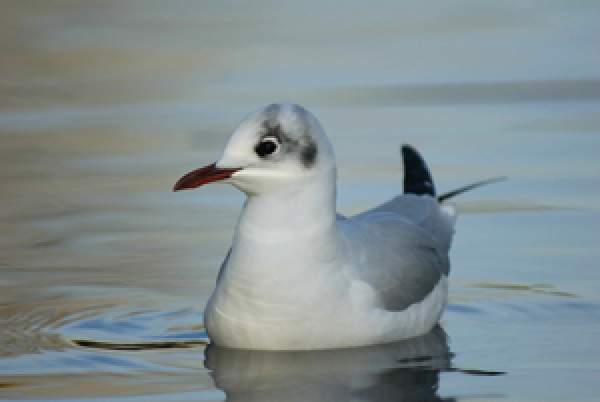Black-headed Gull
Larus ridibundus

Black-headed Gulls are generally regarded as being one of the easiest gulls to identify. During the breeding season, they sport a dark brown head, although during the winter this is reduced to a smudge behind the eye.
This is the gull most frequently seen in urban and suburban gardens and is seldom given a second thought when seen in city centres during winter. In fact, this is a fascinating and quite recent development – the first Black-headed Gulls wintered in central London only 100 years ago. Inland breeding colonies range from fewer than 10 pairs up to a staggering 20,000 pairs, and tend to be associated with old gravel pits and sewage works. We are now in a situation where inland breeding colonies actually outnumber coastal ones.
Black-headed Gulls mainly feed on animal material such as insects and earthworms, but they will also take plant material and household waste. Rubbish tips can become favoured foraging sites, as can newly ploughed fields.
Find out more about Black-headed Gulls on BirdFacts and the Wider Countryside Report.






Share this page